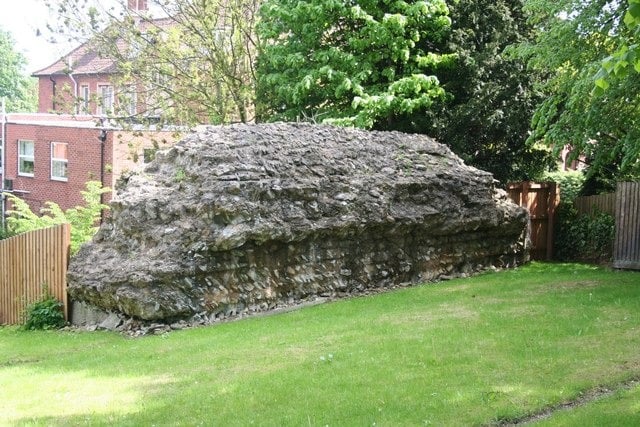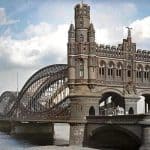Newport Arch is the north gateway of the Roman city of Lincoln, Lincolnshire.
Built in the 3rd century, this ancient gateway is more than just a historical monument; it is a living relic, reputedly the oldest arch in the United Kingdom, still used by traffic today.
History of the Roman Gateway
Newport Arch is a Scheduled Monument and a Grade I listed building.
The arch we see today underwent significant remodeling and expansion when Lindum Colonia, the Roman name for Lincoln, rose to prominence as the capital of the province Flavia Caesariensis in the 4th century.
This iconic arch is the inner face of the north gate of the city, serving as a crucial passageway for Ermine Street, a major Roman road that extended northward to the Humber.

Architectural Details
According to John Ward’s 1911 work, “Romano-British Buildings and Earthworks,” a substantial portion of the Newport Arch remains, although it is partially buried under approximately 8 feet of soil and debris accumulated over the centuries.
The arch itself is around 34 feet deep, featuring a single roadway passage 17.5 feet wide.
The inner portal of this passage remains intact, measuring nearly 16 feet wide and rising to a height of about 22.5 feet above the original Roman ground level.
This arch is constructed from large limestone voussoirs, showcasing the impressive craftsmanship of Roman builders.

The outer arch has not survived the test of time, but the structure still boasts a postern—a small pedestrian gateway—on the east side.
This postern is 7 feet wide, narrowing to about 5 feet at the north end, and stands 15 feet high from the Roman level.
A similar postern once existed on the west side, adding to the symmetry and functionality of the original design.

The 1964 Disaster
In May 1964, a heavy truck hit one of the stones in Newport Arch while traveling south. This caused the top of the arch and part of the structure to fall onto the truck’s roof.
During the restoration, each stone was numbered, and its position recorded before being lifted by crane to free the truck. The damage was worse than expected, so almost the entire arch had to be taken down and rebuilt using a wooden frame.
The City Engineer’s Department did the work, which lasted from May 18 to August 3, 1964. After that, the gate was reopened to traffic.


